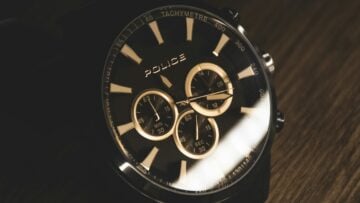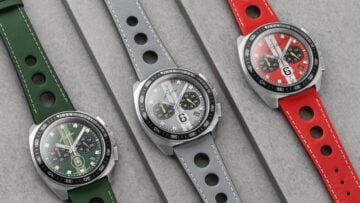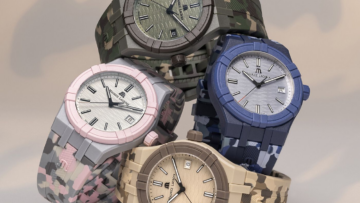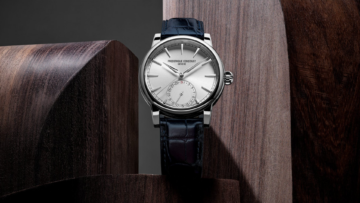As with all technology, watches are surrounded by a lot of myths and misconceptions. One of the biggest known technological myths in recent memory was the millennium bug. People expected planes to fall out of the sky, the worldwide communication network to fail and cash machines to start spitting out money completely at random.
Of course, none of that actually happened… and I should know, I spent the first month of the year 2000 waiting outside the cashpoint at the end of my street.
Many of the myths and misconceptions about watches can lead to you buying a watch which really isn’t what you expect it to be, or staying clear of a watch which would be perfect for your needs.
Today we’ll have a look through some of the main myths and misconceptions about watches.
“Swiss-Made” Watches are Completely Made in Switzerland
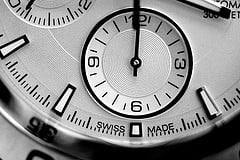
Just because a watch says it is “Swiss-made” it doesn’t mean that it was actually entirely created in Switzerland. I know this might seem as crazy some of Katie Hopkins Twitter updates, but it’s actually true.
According to Swiss law, “Swiss-made” means that at least 50% of the parts inside the watch were made in Switzerland. It also means that the first and last wheel were added in Switzerland.
The law is in place to set a minimum standard for a watch to be considered “Swiss Made” rather than ensuring the entire watch was produced in Switzerland. So it ensures that at least half of your Swiss-made watch will have been made in Switzerland, but not all of it.
There have been a number of attempts to strengthen the law and set a higher bar of “Swiss-ness” but so far they have been opposed by a number of Swiss watchmakers. Most of the watchmakers have chosen to hide their identity, however Mondaine have justified their stance as “Swissness more as a promise than a physical manifestation.”
The More Jewels in a Watch the Better
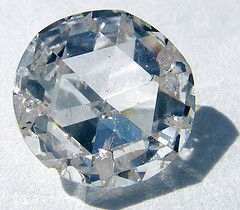
You will often hear watch manufacturers referring to the number of jewels in their watches as an indication of the quality, but it doesn’t always mean that the extra jewels will make for a better watch. The reason jewels were originally used in watches was to reduce friction in the parts of the watch which were likely to take the heaviest wear and tear.
Simply put, jewels are harder than metal – so they can be used to combat metal on metal wear in the watch. The jewels which can be used for this purpose are diamonds, sapphires and rubies. The jewels used today are usually synthetically created rubies.
You would expect to find watches in all of the pivot points for the gear as well as in the anti-shock settings. Over the years the standard number of jewels in a watch has increased in line with the complexity of the watches. In today’s watches you expect to see 16 to 18 jewels in each watch.
Initially, it was very difficult to produce and set the jewels in the watch, so the number of jewels in a watch was a good indicator of the quality. As it became easier to produce and set the jewels in watches, some unscrupulous marketers decided to include jewels in places where they weren’t needed in order to increase the jewel count in the watch. Marketers then heavily promoted the higher number of jewels so that customers would think that the higher jewel count meant a higher quality watch.
Remember that the jewels are synthetic and not valuable, so they don’t increase the value of your watch just by being there. They are actually meant to be there for a purpose. If the number of jewels in a watch stands out as being a lot higher than the rest, you might want to ask what purpose they serve before you part with your money.
NASA’s Only Official Watch is the Omega Speedmaster
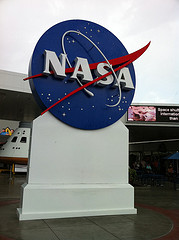
If you search across the internet for NASA’s official watch you will find lots of websites stating clearly that the Omega Speedmaster is the only watch NASA trust. It is true that NASA do trust the OMEGA Speedmaster and have used it on many of their missions since 1962, including making it the only watch to have been worn on the moon in 1969. But it is not NASA’s only official watch.
NASA have a number of watches which they deem to be official watches which are certified for space travel. The Omega Speedmaster is one, the others are the Casio G-Shock and the Timex Ironman.
Rolex Make the Best Watches
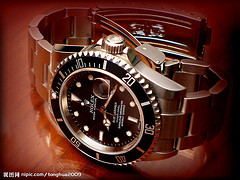
Over the years Rolex have become the most desirable watches on the market. This is partly due to the quality design, craftsmanship and the many innovations they have brought to the table when it comes to watch making. But it is also due to incredible marketing! Despite Rolex being the most widely recognised premium watch, many people would describe Patek Phillipe as the industries premium watchmaker.
Plus, you cannot really describe any one manufacturer as the one who make the best watches because, depending on what you want from a watch, you may find better options for you from different manufacturers. For example, in terms of luminosity, Luminox may be a better option. In terms of functionality, you may find Casio G-Shock to be the best option for you.
Rolex produce beautifully designed watches and they are almost definitely going to catch the eye if you sport one on your wrist. But in terms of the best watches… the jury is still out!
The More Expensive the Watch, the Better It Is!

You’d expect this to stand to reason, as it is usually the case with most other items. For example, you’d expect a £1000 laptop to perform better than a £100 netbook. You would also expect a meal from a top quality restaurant to be more satisfying than a meal from McDonalds (I also wouldn’t expect a meal from McDonalds to be satisfying in any circumstance!)
But when it comes to watches, it may not always be the case. In fact, you would probably expect a cheap £20 Timex to keep better time than the highest priced watches on the market. The reason for this might surprise you, but it’s down to the movements in the watches. Almost all of the lower priced watches use quartz movements, which are very cheap to produce – and are incredibly accurate, with a typical deviation rate of +/- 20 seconds per month.
The highest end watches generally use mechanical movements, they are usually more complicated and expensive to produce. But mechanical movements usually don’t tell the time any better than cheaper quartz movements. Many mechanical watches will have a standard deviation of +/- 20 seconds per day!
It usually surprises most premium watch aficionados to accept that this is the case, as you would usually expect a correlation between performance and price. Of course, the timekeeping quality is only half of the story. The quality in terms of design and craftsmanship of the high-end mechanical watches will always be much higher than a cheaper watch. You should also expect a high-end watch to be more durable and to last much longer than the cheaper options.
Conclusion
Have you fallen for any of these horological myths before? Don’t be surprised if you have, these myths and misconceptions about watches are incredibly common! But at least now you’re armed with the knowledge to make sure that you don’t fall for them again!
So if you’re told that you should buy a Rolex because they are “the best quality on the market” or that one watch has more jewels than you can shake a stick at, you’ll know better than to just accept the claims at face value.
Keep an eye on the blog in coming weeks for more top quality watch knowledge!
Images: ryuu ji 竜次, AGeekMom, foeoc kannilc, Andrew Magill, Steve Jurvetson

